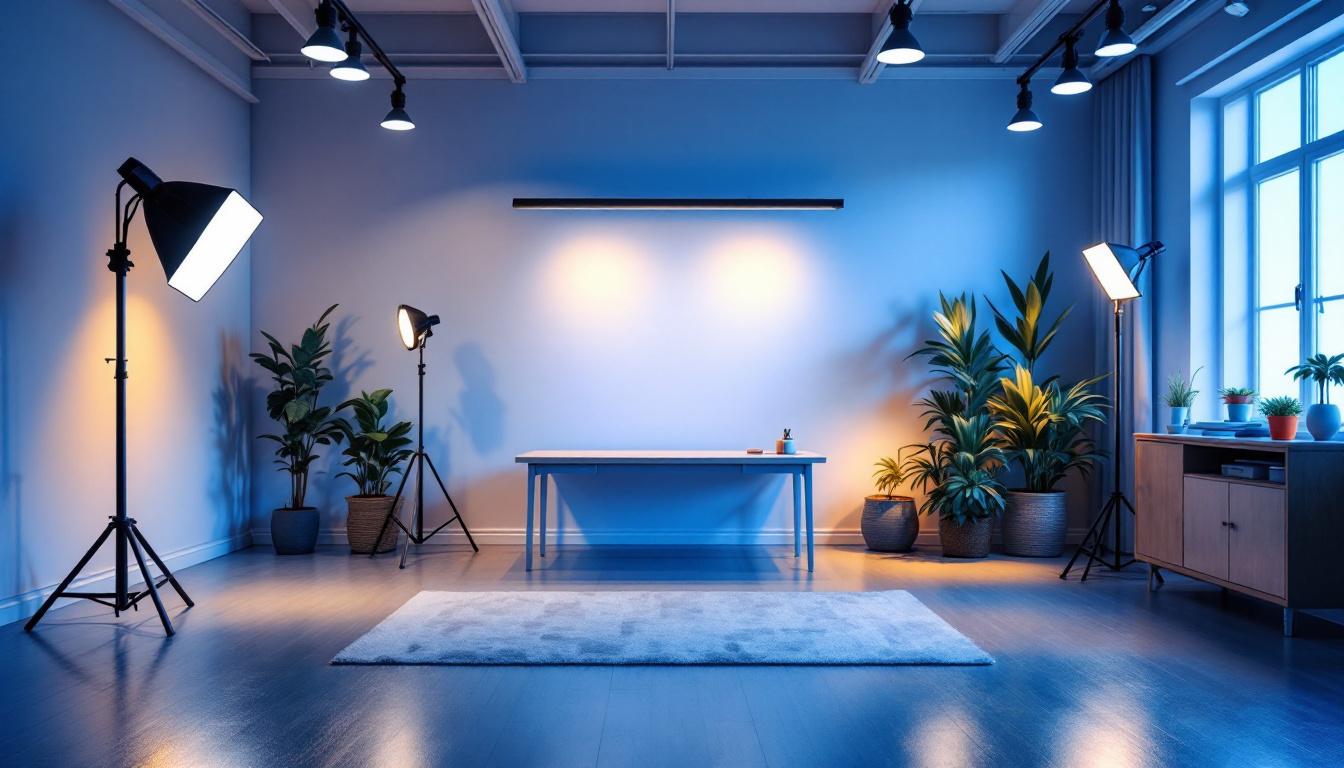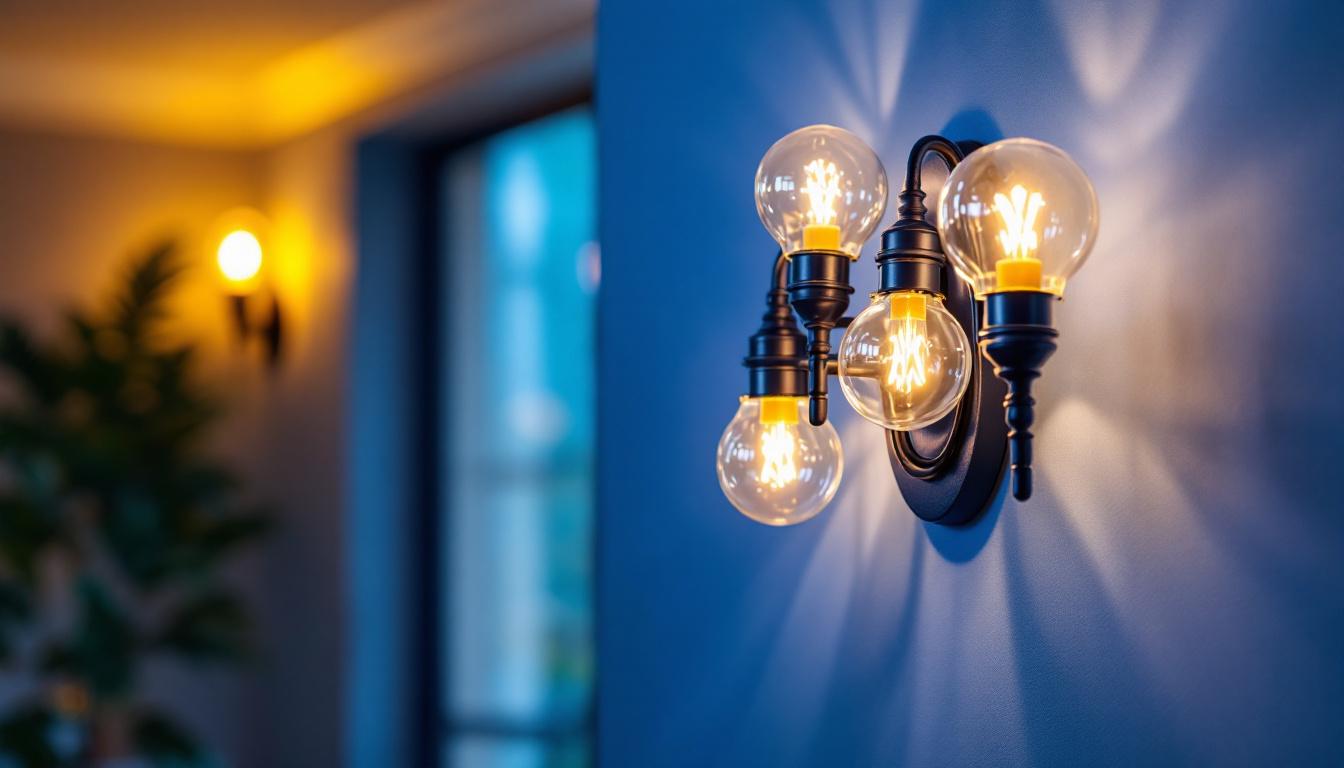
When it comes to lighting, the term “lumens” is often thrown around, but what does it really mean? Lumens measure the total amount of visible light emitted by a source. Unlike watts, which indicate energy consumption, lumens provide a direct indication of how bright a light source will appear to the human eye. In practical terms, 5000 lumens is a significant amount of light, suitable for various applications, particularly in commercial and industrial settings.
For lighting contractors, understanding the lumens output is crucial for designing effective lighting solutions. Whether it’s illuminating a warehouse, a retail space, or an office, knowing how to utilize 5000 lumens can lead to enhanced visibility and improved efficiency. In environments where tasks require precision, such as in manufacturing or assembly lines, the right lumens can reduce errors and increase productivity. Furthermore, the strategic placement of lighting can create a more inviting atmosphere, which is particularly important in customer-facing businesses.
To fully grasp the brightness of 5000 lumens, it’s helpful to compare it with other common lighting measurements. For instance, a standard 60-watt incandescent bulb produces about 800 lumens, while a 100-watt bulb emits around 1600 lumens. This means that 5000 lumens is equivalent to approximately three to six standard incandescent bulbs, depending on their wattage. Understanding this comparison allows consumers and professionals alike to make informed choices when selecting lighting options for specific needs.
Additionally, LED technology has revolutionized the way lumens are perceived. An LED bulb can produce the same amount of light as an incandescent bulb while consuming significantly less energy. This efficiency is essential for contractors looking to optimize lighting designs while minimizing energy costs. Moreover, LEDs have a longer lifespan, often lasting up to 25,000 hours or more, which translates to reduced maintenance and replacement costs over time. As the demand for sustainable and energy-efficient solutions grows, the importance of lumens in the context of LED lighting becomes even more pronounced, making it a key consideration for both residential and commercial lighting projects.
Understanding where and how to apply 5000 lumens can significantly impact the effectiveness of a lighting project. This level of brightness is particularly advantageous in environments requiring high visibility and safety.
In commercial settings, such as retail stores or showrooms, 5000 lumens can create a welcoming atmosphere that enhances product visibility. Properly distributed light can draw customers’ attention to merchandise and create an inviting shopping experience.
For example, using 5000 lumens in a retail store can help highlight promotional displays or specific product areas. This level of brightness can also be beneficial in areas where detailed tasks are performed, such as checkout counters or customer service desks. Additionally, the use of 5000 lumens can improve the overall ambiance of the store, making it feel more open and spacious. This is particularly important in smaller retail environments, where maximizing the perception of space can lead to a more enjoyable shopping experience. Furthermore, strategically placed lighting can create focal points that guide customers through the store, encouraging them to explore different sections and discover new products.
In industrial settings, safety and visibility are paramount. Warehouses, factories, and manufacturing facilities often require bright lighting to ensure that workers can see clearly while performing tasks. Here, 5000 lumens can illuminate large areas effectively, reducing the risk of accidents and improving overall productivity.
Moreover, in environments where machinery is operated, adequate lighting is essential for monitoring equipment and ensuring safety protocols are followed. The right lighting can also enhance the quality of work, as employees are less likely to experience eye strain or fatigue in well-lit conditions. In addition to improving safety, the use of 5000 lumens can also contribute to more efficient operations by allowing for better visibility of inventory and workflow processes. In a warehouse setting, for example, bright lighting can help workers quickly locate items, streamline picking processes, and reduce errors in order fulfillment. This not only boosts productivity but also enhances the overall efficiency of the supply chain, making it a crucial aspect of modern industrial operations.
To make the most of 5000 lumens, lighting contractors must consider various factors that influence lighting efficiency. From fixture selection to layout design, every aspect plays a role in achieving optimal results.
The choice of fixtures can significantly impact how effectively lumens are utilized in a space. LED fixtures are often the preferred option due to their energy efficiency and long lifespan. Unlike traditional incandescent or fluorescent lights, LEDs convert a higher percentage of energy into visible light, making them an ideal choice for high-lumen applications.
Additionally, selecting fixtures with appropriate beam angles can help direct light where it is needed most. For instance, narrow beam angles are suitable for task lighting, while wider angles can provide general illumination. Understanding the specific needs of the space will guide the selection of the right fixtures. Furthermore, the color temperature of the LEDs should also be considered, as it can influence the ambiance of the environment. Warmer tones (around 2700K to 3000K) create a cozy atmosphere, ideal for residential settings, while cooler tones (5000K and above) are often preferred in commercial spaces for their ability to enhance focus and productivity.
Once the fixtures are chosen, the next step is to plan the layout and distribution of light. Proper spacing between fixtures is crucial to avoid dark spots and ensure even illumination throughout the area. A common rule of thumb is to space fixtures at a distance equal to their mounting height for optimal light distribution.
Moreover, using lighting controls such as dimmers, timers, and sensors can enhance efficiency. These controls allow for adjusting light levels based on occupancy or time of day, reducing energy consumption while maintaining adequate brightness when needed. Incorporating smart lighting systems can take this a step further, enabling remote control and automation through smartphones or voice-activated devices. This not only adds convenience but also allows for more precise adjustments, catering to the dynamic needs of the space and its occupants. Additionally, integrating natural light sources through strategic window placements or skylights can complement artificial lighting, further enhancing energy efficiency while creating a more inviting atmosphere.
While 5000 lumens can provide significant brightness, it’s essential to consider energy efficiency and cost implications. The goal is to achieve the desired lighting effect without incurring excessive energy costs.
To understand the financial impact of using 5000 lumens, contractors should calculate the energy costs associated with different lighting options. For example, a 50-watt LED fixture producing 5000 lumens would consume significantly less energy than a traditional 150-watt incandescent bulb providing the same output.
By comparing the wattage and energy rates, contractors can provide clients with a clear understanding of potential savings. This information can be crucial in persuading clients to invest in energy-efficient lighting solutions that may have a higher upfront cost but will result in long-term savings.
Many regions offer incentives and rebates for energy-efficient lighting upgrades. Contractors should be aware of these programs and communicate the potential benefits to clients. These incentives can help offset initial costs and make energy-efficient options more appealing.
Additionally, educating clients about the environmental benefits of using energy-efficient lighting can enhance their willingness to invest in such solutions. Reducing energy consumption not only lowers costs but also contributes to sustainability efforts.
Once a lighting system is installed, regular maintenance is crucial to ensure its longevity and efficiency. Over time, dust and debris can accumulate on fixtures, diminishing their light output. Implementing a maintenance schedule can help keep lighting systems operating at peak performance.
Regular cleaning of fixtures and lenses is essential to maintain optimal brightness. Dust and grime can significantly reduce light output, making it necessary to clean fixtures periodically. Additionally, conducting inspections can help identify any issues before they escalate, such as flickering lights or burnt-out bulbs.
For contractors, suggesting a maintenance plan to clients can enhance customer satisfaction and ensure that the lighting system continues to meet their needs over time.
As technology continues to evolve, upgrading lighting systems can lead to improved efficiency and performance. Contractors should stay informed about the latest advancements in lighting technology, such as smart lighting systems that offer enhanced control and automation.
Encouraging clients to consider upgrades when necessary can help them stay ahead of the curve and maximize their lighting investments. Whether it’s retrofitting existing fixtures or installing new smart systems, the potential for improved efficiency is significant.
Understanding how bright 5000 lumens can be and how to optimize lighting for maximum efficiency is essential for lighting contractors. From selecting the right fixtures to planning the layout and considering energy costs, every decision impacts the effectiveness of the lighting solution.
By focusing on energy efficiency, maintenance, and technology upgrades, contractors can provide clients with lighting systems that not only meet their needs but also contribute to long-term savings and sustainability. Ultimately, the goal is to create well-lit spaces that enhance productivity, safety, and overall satisfaction.
In the ever-evolving field of lighting design, staying informed and adaptable is key. By leveraging the power of 5000 lumens effectively, lighting contractors can ensure that their projects shine brightly for years to come.
Ready to harness the brilliance of 5000 lumens and elevate your lighting projects to new heights of efficiency and cost-effectiveness? Look no further than LumenWholesale. We provide lighting contractors with the highest quality, spec-grade lighting products at prices that can’t be beaten. Say goodbye to local distributor markups and hello to our extensive selection that meets rigorous industry standards. With LumenWholesale, you get the reliability and performance you need, coupled with the convenience of free shipping on bulk orders. Don’t compromise on quality or value—explore our wholesale lighting options today and find the best lighting solutions for your needs.

Discover the essential insights and advantages of LED cafe lights for lighting contractors.

Discover how innovative electrical cords are revolutionizing the lighting industry, enhancing efficiency and safety for contractors.

Discover essential tips and expert advice for lighting contractors navigating electricity switches.

Discover what sets top lighting contractors apart with multi light wall sconce expertise.